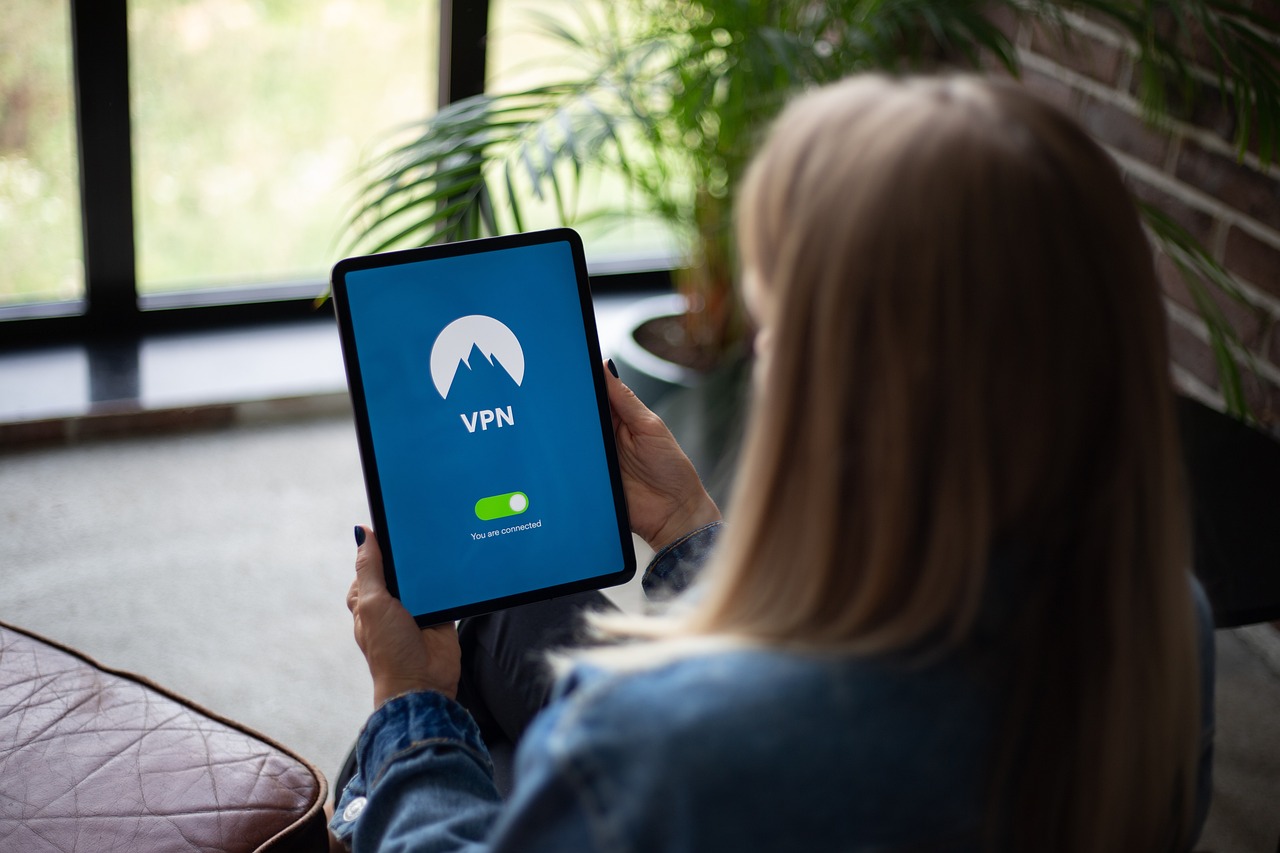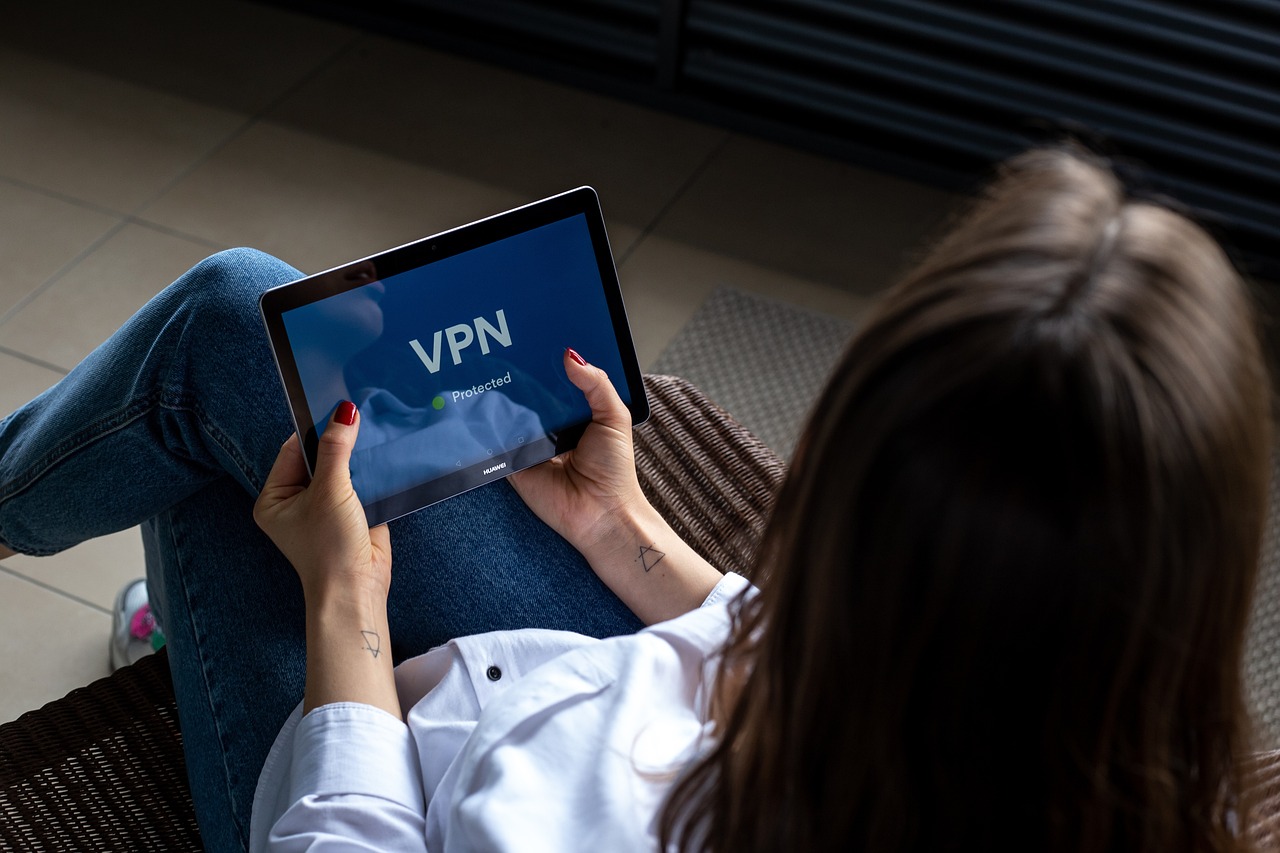The Link Between Cybersecurity and Brand Reputation
In today's digital landscape, the connection between cybersecurity and brand reputation has never been more critical. With every click, swipe, and online transaction, consumer trust hangs in the balance. Imagine your favorite brand suddenly embroiled in a data breach scandal – that feeling of betrayal and concern for your personal information can lead to a swift decline in loyalty. As brands increasingly rely on digital platforms, the potential for cybersecurity threats has surged, making it essential for organizations to prioritize their digital safety measures.
Why does this matter? Well, think of your brand as a house. You wouldn't leave the doors wide open, inviting anyone to stroll in and take what they want, right? Similarly, brands must fortify their digital assets to protect against the ever-evolving threats lurking in the shadows of the internet. A single cybersecurity incident can unravel years of hard-earned trust, leading to not just reputational damage, but also significant financial consequences. This article delves into the intricate relationship between cybersecurity and brand reputation, shedding light on why safeguarding your digital presence is paramount.
As we explore this topic, we will uncover the multifaceted impacts of data breaches on consumer trust and loyalty. We'll discuss the steps brands can take to rebuild trust after a breach, the importance of compliance with cybersecurity regulations, and the necessity of ongoing employee training. By the end of this article, you'll have a clearer understanding of how to protect your brand's reputation in an increasingly interconnected world.
Understanding why cybersecurity is crucial for brands helps organizations prioritize their digital safety measures and protect their reputation in the eyes of consumers. In a world where data is the new currency, brands must treat their cybersecurity strategies with the utmost seriousness. The cost of neglecting this aspect can be staggering, not only in terms of financial loss but also in the erosion of consumer confidence. An effective cybersecurity strategy acts as a safety net, ensuring that your brand remains resilient against potential threats.
Data breaches can severely damage a brand's reputation, leading to loss of customer trust and financial repercussions. When sensitive information is compromised, the fallout can be immediate and devastating. Customers may feel vulnerable, questioning whether their personal data is safe with your brand. This section delves into the consequences of such incidents, illustrating how a single breach can lead to a cascade of negative outcomes.
Consumer trust is vital for brand loyalty. When a data breach occurs, it can erode that trust almost overnight. Picture this: you’ve been a loyal customer for years, and suddenly, you receive a notification that your credit card information may have been compromised. How likely are you to continue shopping with that brand? This section discusses how cybersecurity incidents can affect customer retention rates and the long-term implications for brand loyalty.
Rebuilding trust post-breach requires strategic communication and transparency. Brands must not only acknowledge the breach but also take proactive steps to rectify the situation. This subsection outlines effective methods for regaining consumer confidence, such as clear communication about the breach, offering credit monitoring services, and demonstrating a commitment to enhanced security measures.
Implementing preventive measures is essential for safeguarding a brand's reputation. This subsection highlights key strategies brands can adopt to enhance their cybersecurity posture. From regular security audits to investing in advanced encryption technologies, brands must stay one step ahead of potential threats. By fostering a culture of security awareness among employees and utilizing the latest technologies, brands can significantly reduce their vulnerability to cyberattacks.
Compliance with cybersecurity regulations is essential for brands. This section examines how adhering to these standards can positively influence brand reputation. Regulations such as GDPR and CCPA not only protect consumer data but also enhance a brand's credibility. By demonstrating compliance, brands can reassure customers that their data is handled responsibly, thereby strengthening their reputation.
Employee training is a critical component of cybersecurity. This section emphasizes the importance of educating staff on security practices to mitigate risks. Employees are often the first line of defense against cyber threats, and equipping them with the knowledge to recognize potential risks can make a significant difference in a brand's cybersecurity posture.
Creating a culture that prioritizes security within an organization fosters vigilance and accountability, ultimately enhancing the brand's reputation. When employees understand the importance of cybersecurity and feel empowered to take action, the entire organization becomes more resilient against potential threats.
Ongoing monitoring of cybersecurity measures is vital for brands. This section discusses the importance of regularly assessing and improving security protocols to protect reputation. Cyber threats are constantly evolving, and brands must adapt to stay ahead. By implementing continuous monitoring systems and regularly updating security protocols, brands can ensure they are prepared to face any challenge that comes their way.
- What is the most common type of cybersecurity threat? Phishing attacks are among the most common threats, where attackers trick individuals into providing sensitive information.
- How can brands rebuild trust after a data breach? Brands can rebuild trust by being transparent about the breach, communicating effectively with customers, and implementing stronger security measures.
- Why is employee training important for cybersecurity? Employees are often the first line of defense against cyber threats; training helps them recognize and respond to potential risks.
- What role do regulations play in cybersecurity? Compliance with regulations helps protect consumer data and enhances brand credibility, fostering consumer trust.

The Importance of Cybersecurity for Brands
In today's digital age, where everything is interconnected, cybersecurity has become a cornerstone of brand integrity. Imagine your brand as a fortress; without a strong defense, it becomes vulnerable to attacks that can compromise not just your data but also your reputation. Cybersecurity is not just about protecting sensitive information; it’s about preserving the trust your customers place in you. When brands prioritize cybersecurity, they send a clear message to their customers: "We care about your safety." This commitment can significantly enhance consumer confidence, which is crucial for maintaining a loyal customer base.
Moreover, the ramifications of neglecting cybersecurity can be catastrophic. Consider the consequences of a data breach: not only can it lead to financial losses, but it can also result in a tarnished reputation that can take years to rebuild. Many consumers are quick to judge; a single incident can lead them to question the reliability of your brand. In fact, studies show that over 60% of consumers will stop doing business with a company after a data breach. This statistic highlights the urgent need for brands to invest in robust cybersecurity measures.
But what does it mean to prioritize cybersecurity? It involves a multi-layered approach that encompasses technology, processes, and people. Brands need to implement advanced security technologies, such as firewalls and encryption, alongside creating comprehensive policies that govern data handling. However, the most crucial element is the human factor. Employees must be educated on the importance of cybersecurity and trained to recognize potential threats. A well-informed team acts as the first line of defense against cyber threats.
Additionally, brands must stay updated with the latest cybersecurity trends and threats. The digital landscape is constantly evolving, and so are the tactics employed by cybercriminals. By continuously monitoring your cybersecurity posture and adapting to new challenges, you not only protect your assets but also enhance your brand's reputation in the eyes of consumers. It's a proactive approach that demonstrates your commitment to safeguarding their interests.
In summary, the importance of cybersecurity for brands cannot be overstated. It is about more than just compliance; it’s about building a resilient brand that consumers can trust. By prioritizing cybersecurity, brands not only protect their digital assets but also foster long-term relationships with their customers, ensuring loyalty and trust in an increasingly competitive marketplace.

The Impact of Data Breaches on Reputation
In today's digital age, the phrase "data breach" sends shivers down the spine of brands and consumers alike. It's not just a technical issue; it’s a full-blown crisis that can tarnish a brand's reputation in the blink of an eye. When sensitive information is compromised, the fallout can be catastrophic, affecting everything from customer trust to financial stability. Imagine your favorite brand suddenly being associated with a massive data leak—how would that change your perception of them? This is the reality many companies face when they neglect their cybersecurity measures.
Data breaches can result in a significant loss of consumer confidence. According to recent studies, nearly 60% of consumers say they would stop doing business with a brand if their personal information were compromised. This statistic highlights just how fragile consumer trust can be. Once breached, regaining that trust isn't as simple as sending out a few apologies; it requires a comprehensive strategy that addresses the root causes of the breach and reassures customers that their data is safe.
Furthermore, the financial implications of a data breach are staggering. According to a report by IBM, the average cost of a data breach in 2023 was around $4.45 million. This figure encompasses not only the immediate costs related to the breach itself, such as fines and legal fees, but also the long-term effects on brand reputation and customer loyalty. Brands often find themselves in a vicious cycle where the financial strain leads to cutbacks in security measures, which in turn increases the likelihood of future breaches.
To illustrate the impact of data breaches on brand reputation, consider the following table:
| Brand | Year of Breach | Estimated Cost | Consumer Trust Impact |
|---|---|---|---|
| Company A | 2021 | $5 million | Decreased by 30% |
| Company B | 2022 | $3 million | Decreased by 25% |
| Company C | 2023 | $4 million | Decreased by 40% |
The table above showcases how even well-established brands can suffer devastating consequences from data breaches. The loss of consumer trust can take years to rebuild, and in some cases, companies never fully recover. It’s a harsh reminder that in the world of cybersecurity, prevention is always better than cure.
Moreover, the ripple effect of a data breach can extend beyond immediate financial losses. Companies might find themselves facing increased scrutiny from regulators, which can lead to further reputational damage. As consumers become more aware of their rights and the importance of data privacy, brands that fail to take cybersecurity seriously will likely find themselves on the wrong side of public opinion.
In conclusion, the impact of data breaches on a brand's reputation cannot be overstated. The consequences are far-reaching, affecting not only the immediate financial health of the company but also its long-term viability in the marketplace. As we navigate this interconnected world, brands must prioritize cybersecurity to safeguard their reputation and maintain consumer trust.
- What is a data breach? A data breach occurs when unauthorized individuals gain access to sensitive information, often leading to identity theft or financial fraud.
- How can a brand recover from a data breach? Recovery involves transparent communication with consumers, implementing stronger cybersecurity measures, and rebuilding trust through consistent engagement.
- What are the signs of a data breach? Signs can include unusual account activity, unauthorized transactions, and notifications from the company about potential security issues.

In today's fast-paced digital landscape, consumer trust is not just a nice-to-have; it's a fundamental pillar that supports the entire structure of a brand's reputation. Imagine your favorite restaurant—if you found out they had a history of food safety violations, would you still dine there? Probably not! The same principle applies to brands in the digital world. A single cybersecurity incident can lead to a catastrophic decline in consumer trust, which in turn affects loyalty and retention rates.
When consumers hear about a data breach or cyberattack, they often feel vulnerable and question the security of their personal information. This discomfort can manifest in various ways, such as decreased purchases, negative reviews, or even social media backlash. According to a study by the Ponemon Institute, 60% of consumers stated they would stop doing business with a brand if their personal data was compromised. This statistic underscores how fragile trust can be, making it imperative for brands to prioritize cybersecurity.
Furthermore, the impact of cybersecurity breaches extends beyond immediate financial losses. The long-term effects can be even more devastating. Brands may find themselves in a vicious cycle where they spend enormous resources on damage control, marketing campaigns to rebuild their image, and legal fees, all while struggling to regain the trust of their customers. This cycle can lead to a significant erosion of brand loyalty, which is often difficult, if not impossible, to recover.
To illustrate this point, consider the following table that outlines the relationship between cybersecurity incidents and consumer trust:
| Type of Incident | Impact on Consumer Trust | Potential Financial Loss |
|---|---|---|
| Data Breach | High | $3.86 million (average cost) |
| Phishing Attack | Moderate | $1.6 million (average cost) |
| Malware Attack | High | $2.4 million (average cost) |
In light of these risks, brands must take proactive steps to enhance their cybersecurity measures and communicate these efforts effectively to their customers. Transparency is key. When consumers see brands actively addressing cybersecurity threats and prioritizing their data safety, it fosters a sense of security and trust. This can be achieved through regular updates, informative newsletters, and even social media posts that highlight the brand's commitment to protecting consumer information.
Ultimately, the relationship between consumer trust and brand loyalty is a delicate balance. Brands that prioritize cybersecurity not only protect their digital assets but also cultivate lasting relationships with their customers. By investing in robust security measures and maintaining open lines of communication, brands can ensure that their reputation remains intact, even in the face of potential threats.
- How can a data breach affect my brand's reputation? A data breach can lead to a significant loss of consumer trust, resulting in decreased sales and a tarnished image.
- What steps can brands take to rebuild trust after a breach? Brands should focus on transparency, effective communication, and implementing stronger security measures to regain consumer confidence.
- Why is employee training important for cybersecurity? Employees are often the first line of defense against cyber threats; training them can help mitigate risks and protect sensitive information.

When a data breach occurs, it feels like the ground has been pulled from under a brand's feet. The trust that customers once had can vanish in an instant, leaving behind a cloud of doubt and uncertainty. But fear not! Rebuilding trust is not an impossible task; it just requires a thoughtful approach and a commitment to transparency. First and foremost, brands must acknowledge the breach openly. This means not hiding behind legal jargon or corporate speak, but instead, communicating directly and honestly with affected customers. Let’s face it, nobody likes to feel like they’re being kept in the dark. So, what can brands do to regain that lost trust?
One effective strategy is to implement a robust communication plan that outlines the steps being taken to address the breach. This includes:
- Immediate Notification: Informing customers as soon as possible about the breach and the potential impact on their data.
- Detailed Explanation: Providing a clear account of what happened, how it happened, and what is being done to prevent future occurrences.
- Support Resources: Offering resources such as credit monitoring services or dedicated support lines to assist affected customers.
Moreover, brands should not shy away from showing vulnerability. Acknowledging mistakes and taking responsibility can actually strengthen the relationship with customers. Think of it like a friendship: when you mess up, owning up to it can lead to a deeper connection. To further enhance this rebuilding process, organizations should consider holding public forums or Q&A sessions. This not only demonstrates accountability but also invites customer feedback, which can be invaluable for improving security measures.
Another vital component of rebuilding trust is ensuring that all stakeholders, including employees, are on the same page. Training staff on how to communicate effectively about the breach and the steps being taken to rectify it can create a unified front. When employees are informed and engaged, they can help convey the brand's commitment to security and transparency, reinforcing trust among customers.
Finally, it’s crucial for brands to follow through on promises made during the recovery process. If a company pledges to enhance its cybersecurity measures, it must do so and communicate these improvements to customers. Regular updates on security enhancements can serve as a reminder that the brand is serious about protecting its customers’ data. In essence, rebuilding trust is a marathon, not a sprint. It requires ongoing effort, genuine communication, and a steadfast commitment to improvement.
- What should a brand do immediately after a data breach?
Brands should notify affected customers promptly, provide details about the breach, and offer support services to mitigate any potential harm. - How long does it take to rebuild trust after a breach?
The timeline can vary depending on the severity of the breach and the effectiveness of the response, but it often takes months or even years to fully regain customer trust. - Are there specific strategies to prevent future breaches?
Yes, implementing advanced security measures, regular audits, employee training, and fostering a culture of security can significantly reduce the risk of future breaches.

In today's digital landscape, where threats loom around every corner, brands must take a proactive stance to safeguard their reputation. Preventive measures are not just a checkbox on a compliance list; they are essential strategies that can mean the difference between thriving and merely surviving in a competitive market. By investing in robust cybersecurity practices, brands can protect their digital assets while simultaneously nurturing consumer trust.
One of the first steps brands should take is to conduct a comprehensive risk assessment. This involves identifying potential vulnerabilities within the organization’s digital infrastructure. By understanding where the weak points lie, brands can prioritize their cybersecurity efforts effectively. For instance, if a company relies heavily on customer data, implementing strong encryption methods and secure data storage solutions should be at the forefront of their strategy.
Next, brands should implement multi-factor authentication (MFA) across all platforms. This extra layer of security acts like a digital fortress, requiring not just a password but also a secondary form of verification. It’s akin to having a bouncer at the door of a high-end club—only the most trusted individuals get in. This simple yet effective measure can significantly reduce the risk of unauthorized access to sensitive data.
Additionally, regular software updates and patch management are critical. Cybercriminals often exploit outdated software to gain entry into systems. By maintaining an up-to-date software environment, brands can close these security gaps before they are exploited. Think of it as regularly changing the locks on your doors; it’s a small effort that can prevent a major breach.
Moreover, brands should consider investing in cybersecurity insurance. This type of insurance can provide financial protection in the event of a data breach, covering costs related to legal fees, customer notifications, and even public relations efforts to help restore the brand’s reputation. It’s like having an umbrella on a cloudy day—better to be safe than sorry!
Finally, fostering a culture of cybersecurity awareness among employees is paramount. Regular training sessions can equip staff with the knowledge to recognize phishing attempts and other common threats. Empowered employees act as the first line of defense against cyber threats, turning the entire organization into a vigilant fortress. By integrating cybersecurity training into the onboarding process and conducting ongoing workshops, brands can cultivate a workforce that prioritizes security.
In summary, the preventive measures brands take today will not only protect their digital assets but also fortify their reputation in the eyes of consumers. By prioritizing cybersecurity, brands can ensure that they remain trustworthy and reliable in an ever-evolving digital landscape.
- What are the most common cybersecurity threats brands face? Cybersecurity threats can range from phishing attacks to ransomware and data breaches. Understanding these threats is crucial for brands to implement effective preventive measures.
- How often should brands conduct cybersecurity training for employees? It’s recommended that brands conduct cybersecurity training at least once a year, with additional refresher courses or updates whenever new threats emerge.
- What role does customer communication play in cybersecurity? Transparent communication with customers about cybersecurity measures and data breaches can help maintain trust and loyalty, even in challenging situations.

In today's digital landscape, compliance with cybersecurity regulations is not just a legal obligation; it is a crucial factor that can significantly influence a brand's reputation. Regulations such as the General Data Protection Regulation (GDPR) and the Health Insurance Portability and Accountability Act (HIPAA) are designed to protect consumer data and ensure that organizations handle sensitive information responsibly. When brands adhere to these regulations, they not only avoid hefty fines but also bolster their credibility in the eyes of consumers. In essence, compliance acts as a safety net, catching potential risks before they escalate into damaging incidents.
Moreover, the relationship between compliance and brand reputation is symbiotic. On one hand, compliance enhances trust; consumers are more likely to engage with brands that demonstrate a commitment to safeguarding their data. On the other hand, non-compliance can lead to catastrophic consequences, including data breaches that can tarnish a brand's image. For instance, a company that experiences a breach due to negligence in following compliance protocols may find itself facing not only legal repercussions but also a public relations nightmare. This is why organizations must view compliance as an integral part of their overall business strategy.
To illustrate the impact of compliance on brand reputation, consider the following table that summarizes key regulations and their implications:
| Regulation | Industry | Key Implications for Brands |
|---|---|---|
| GDPR | All industries in the EU | Fines up to €20 million or 4% of global turnover; increased consumer trust |
| HIPAA | Healthcare | Penalties for non-compliance; protection of patient information |
| PCI DSS | Payment Card Industry | Fines and increased scrutiny; assurance of secure payment processing |
In addition to regulatory compliance, brands must also be proactive in communicating their commitment to cybersecurity. Transparency in how data is collected, stored, and protected can significantly enhance a brand's reputation. Consumers appreciate brands that are open about their practices, especially in an era where data breaches are increasingly common. By sharing information about compliance efforts and security measures, brands can foster a sense of trust and loyalty among their customers.
In conclusion, compliance with cybersecurity regulations is not merely about avoiding penalties; it serves as a cornerstone for building and maintaining a reputable brand. By prioritizing compliance, organizations can protect themselves from potential threats while simultaneously enhancing their standing in the eyes of consumers. As the digital world continues to evolve, brands that embrace compliance as a fundamental aspect of their operations will thrive in a competitive marketplace.
- What is the purpose of cybersecurity regulations? Cybersecurity regulations are designed to protect consumer data and ensure organizations handle sensitive information responsibly.
- How can compliance enhance brand reputation? Compliance demonstrates a commitment to data protection, which can increase consumer trust and loyalty.
- What are the consequences of non-compliance? Non-compliance can lead to legal penalties, data breaches, and significant damage to a brand's reputation.
- How can brands communicate their compliance efforts? Brands can enhance transparency by sharing information about their data protection practices and compliance initiatives.

In today's digital landscape, where cyber threats are lurking around every corner, employee training has become an essential pillar of any robust cybersecurity strategy. Think of your employees as the frontline defenders of your brand's reputation; they are the ones who interact with sensitive data and systems every day. If they are not adequately trained, they can unknowingly become the weak link in your security chain. So, how can organizations ensure that their staff is equipped to handle potential threats effectively? It all starts with comprehensive cybersecurity training.
First and foremost, training should cover the basic principles of cybersecurity, such as identifying phishing emails, understanding the importance of strong passwords, and recognizing suspicious activity. This foundational knowledge acts as a shield, empowering employees to make informed decisions that protect both themselves and the organization. Additionally, organizations should implement regular training sessions, as the cyber threat landscape is constantly evolving. What may have been a viable security practice a year ago could be outdated today. Therefore, keeping the training up-to-date is not just a good practice; it's a necessity.
Moreover, interactive training methods can significantly enhance the learning experience. Instead of a monotonous lecture, consider using engaging formats such as gamified training sessions or simulated cyber-attack scenarios. These methods not only make learning fun but also allow employees to apply what they've learned in a controlled environment. For instance, you could create a mock phishing campaign to see how many employees can identify the fake emails. This not only tests their knowledge but also reinforces the importance of vigilance in a real-world context.
Another critical aspect of cybersecurity training is fostering a culture of security within the organization. When employees understand that cybersecurity is everyone's responsibility, they are more likely to take it seriously. Encourage open communication where employees feel comfortable reporting suspicious activities without fear of repercussions. This creates an environment where vigilance becomes second nature, and employees become more proactive in safeguarding digital assets.
To gauge the effectiveness of training programs, organizations should regularly assess employee knowledge through quizzes and simulations. This not only helps identify areas where further training is needed but also reinforces the information learned. By tracking progress over time, organizations can adjust their training programs to address emerging threats and ensure that employees remain well-informed.
In summary, investing in cybersecurity training for employees is not just about compliance; it's about creating a resilient workforce that can adapt to the ever-changing cyber landscape. By equipping employees with the right knowledge and tools, organizations can significantly reduce the risk of breaches and protect their brand reputation. Remember, in the battle against cyber threats, your employees are your first line of defense. Are you ready to empower them?
- Why is cybersecurity training important for employees?
Cybersecurity training is crucial as it equips employees with the knowledge to identify and respond to potential threats, reducing the risk of data breaches and protecting the organization's reputation. - How often should cybersecurity training be conducted?
Training should be conducted regularly, ideally at least once a year, with updates provided as new threats emerge to keep employees informed and vigilant. - What methods can be used for effective training?
Interactive methods such as gamified training, simulations, and real-world scenarios can enhance engagement and retention of knowledge among employees. - How can organizations measure the effectiveness of their training?
Organizations can measure effectiveness through quizzes, simulations, and tracking employee performance over time to identify areas for improvement.

In today's digital landscape, where threats lurk behind every click, cultivating a security-first culture within an organization is not just advisable; it's essential. Imagine your brand as a fortress, with cybersecurity being the walls that protect it from invading forces. If your employees are not aware of their role in maintaining these defenses, then the fortress is at risk of crumbling. A security-first culture ensures that every team member, from the CEO to the intern, understands the importance of cybersecurity and actively participates in safeguarding the organization's digital assets.
To instill this culture, organizations must prioritize education and awareness. Regular training sessions can transform employees from potential vulnerabilities into vigilant guardians of the brand. These sessions should cover a range of topics, including recognizing phishing attempts, understanding the importance of strong passwords, and knowing how to respond to potential security incidents. By making cybersecurity training a routine part of employee development, brands can foster a sense of responsibility and ownership towards their digital safety.
Moreover, it's crucial to lead by example. When leadership demonstrates a commitment to cybersecurity, it sets a powerful precedent for the entire organization. This could involve regularly communicating security updates, sharing incident reports, and celebrating successes in maintaining security protocols. When employees see their leaders prioritizing cybersecurity, they are more likely to follow suit. It's about creating a ripple effect that emphasizes the significance of security at every level.
Furthermore, organizations should encourage open communication about security concerns. Employees must feel comfortable reporting suspicious activities without the fear of reprimand. This can be achieved by establishing a clear protocol for reporting incidents and ensuring that employees know their voices will be heard. A culture that promotes transparency can lead to quicker identification of potential threats and fosters a collaborative approach to security.
Lastly, measuring the effectiveness of these initiatives is vital. Regular assessments and feedback loops can help organizations understand how well they are cultivating a security-first culture. This could involve conducting surveys to gauge employee awareness and attitudes towards cybersecurity or simulating phishing attacks to test their responses. By continuously evaluating and improving security practices, organizations can ensure that their fortress remains strong against evolving threats.
- What is a security-first culture?
A security-first culture is an organizational mindset that prioritizes cybersecurity as a fundamental aspect of all operations. It involves educating employees, fostering open communication, and leading by example to ensure everyone plays a role in protecting digital assets. - Why is employee training important for cybersecurity?
Employee training is crucial because it empowers staff to recognize and respond to potential security threats. Well-informed employees are less likely to fall victim to phishing attacks or other cyber threats, thereby reducing the overall risk to the organization. - How can leadership influence a security-first culture?
Leadership can influence a security-first culture by demonstrating a commitment to cybersecurity through regular communication, involvement in training, and by setting policies that prioritize security at all levels of the organization.

In today's digital landscape, where cyber threats are evolving at an alarming rate, the concept of continuous monitoring and improvement in cybersecurity is not just a luxury; it's a necessity. Imagine a fortress that has no guards; it is only a matter of time before intruders make their way in. Similarly, brands must adopt a proactive approach to cybersecurity, ensuring that their defenses are not only in place but also regularly updated and fortified against new threats.
Continuous monitoring involves the ongoing assessment of security systems, processes, and protocols. This means that brands should not wait for a breach to occur before they assess their vulnerabilities. Instead, they should implement a dynamic monitoring system that constantly checks for anomalies or suspicious activity. By doing so, brands can identify potential threats before they escalate into serious issues. Think of it as having a smoke detector that alerts you to danger long before the flames engulf your home.
Moreover, improvement should be a fundamental part of this monitoring process. Cybersecurity is not a one-time fix; it requires regular updates to software, policies, and procedures to stay ahead of cybercriminals. This can involve:
- Updating firewalls and antivirus software to the latest versions.
- Conducting regular vulnerability assessments and penetration testing.
- Reviewing and refining incident response plans based on previous experiences and emerging threats.
Consider the analogy of a gardener tending to a garden. Just as a gardener must regularly prune, water, and fertilize plants to ensure they thrive, organizations must consistently refine their cybersecurity measures to protect their digital assets. This means investing in the latest technologies and tools that can provide real-time insights into security posture and potential vulnerabilities.
Additionally, brands should foster a culture of security awareness among employees. Regular training sessions can help staff recognize phishing attempts and understand the importance of strong passwords. Employees are often the first line of defense, and their vigilance can significantly reduce the likelihood of a successful cyber attack. Engaging employees in cybersecurity through gamified training or interactive workshops can enhance their understanding and commitment to security practices.
Finally, brands should not shy away from sharing their cybersecurity journey with their customers. Transparency is key in building trust. By openly communicating about the measures taken to protect consumer data and the steps taken after a breach, brands can demonstrate their commitment to security. This ongoing dialogue not only reassures customers but also strengthens the brand's reputation in the long run.
In conclusion, continuous monitoring and improvement in cybersecurity are essential for protecting a brand's reputation. By being proactive, investing in employee training, and maintaining transparency, brands can not only safeguard their digital assets but also foster a loyal customer base that feels secure in their choice of brand.
- What is continuous monitoring in cybersecurity? Continuous monitoring involves the ongoing assessment of security systems to identify vulnerabilities and threats in real-time.
- Why is employee training important for cybersecurity? Employees are often the first line of defense against cyber threats; training them helps to recognize and mitigate risks effectively.
- How can brands improve their cybersecurity measures? Brands can improve their cybersecurity by regularly updating software, conducting vulnerability assessments, and fostering a culture of security awareness among employees.
Frequently Asked Questions
- Why is cybersecurity important for brands?
Cybersecurity is crucial for brands because it protects sensitive data, maintains consumer trust, and safeguards the brand's reputation. In today's digital landscape, a single breach can lead to significant financial losses and a tarnished image, making it essential for organizations to prioritize their cybersecurity measures.
- How do data breaches affect brand reputation?
Data breaches can severely damage a brand's reputation by eroding customer trust. When consumers feel that their personal information is not secure, they may choose to take their business elsewhere. This loss of trust can lead to decreased customer loyalty, lower sales, and long-term financial repercussions.
- What steps can brands take to rebuild trust after a breach?
To rebuild trust after a breach, brands should engage in transparent communication with their customers, outlining what happened, how it was addressed, and what measures are being taken to prevent future incidents. Offering support, such as credit monitoring services, can also help in regaining consumer confidence.
- What preventive measures can brands implement to enhance cybersecurity?
Brands can adopt several preventive measures, including regular security audits, employee training programs, and the implementation of advanced security technologies. Establishing a robust incident response plan is also vital to quickly address any potential breaches.
- How do compliance and regulations influence brand reputation?
Adhering to cybersecurity regulations not only helps brands avoid legal penalties but also enhances their reputation. Compliance demonstrates to consumers that a brand takes security seriously, which can be a significant factor in customer decision-making.
- Why is employee training important in cybersecurity?
Employee training is essential because human error is often the weakest link in cybersecurity. Educating staff about security practices, potential threats, and how to respond can significantly reduce the risk of breaches and foster a culture of vigilance within the organization.
- What does a security-first culture look like?
A security-first culture prioritizes cybersecurity at all levels of an organization. This includes regular training, open communication about security issues, and encouraging employees to report potential threats. When everyone is on board, it enhances the overall security posture and brand reputation.
- How can brands ensure continuous improvement in their cybersecurity measures?
Brands can ensure continuous improvement by regularly assessing their security protocols, staying updated on the latest threats, and adapting their strategies accordingly. This proactive approach helps in identifying vulnerabilities before they can be exploited, ultimately protecting the brand's reputation.


















